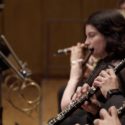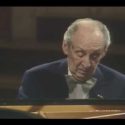Les Élémens
1. Le Chaos
listen: Stuttgarter Kammerorchester
Thomas Zehetmair, cond.
Baroque music is pleasing to the ear. Bach was the master of delicious polyphony and beautiful part-writing. Handel, Telemann and Vivaldi are crisp and to the point. Rameau and Scarlatti wrote some of the greatest, technically difficult, and exciting keyboard works of all time.
Then there the lesser known composers — Jean-Féry Rebel being one of them.
The first movement of this work — whose later movements are more traditional, focusing on the elements: air, fire and water, along with some more popular French dances — is called “The Chaos.” In it, he attempts to musically depict that time right before the universe was created.
Genesis 1:2
|
2Now the earth was astonishingly empty, and darkness was on the face of the deep, and the spirit of God was hovering over the face of the water.
|
בוְהָאָ֗רֶץ הָֽיְתָ֥ה תֹ֨הוּ֙ וָבֹ֔הוּ וְח֖שֶׁךְ עַל־פְּנֵ֣י תְה֑וֹם וְר֣וּחַ אֱלֹהִ֔ים מְרַחֶ֖פֶת עַל־פְּנֵ֥י הַמָּֽיִם |
1. Le Chaos
6:21: 2. Loure “La Terre” (Air pour les violons); “L’eau” (Air pour les flütes)
8:12: 3. Chaconne “Le feu”
Go to Source
Author: Lewis Saul













